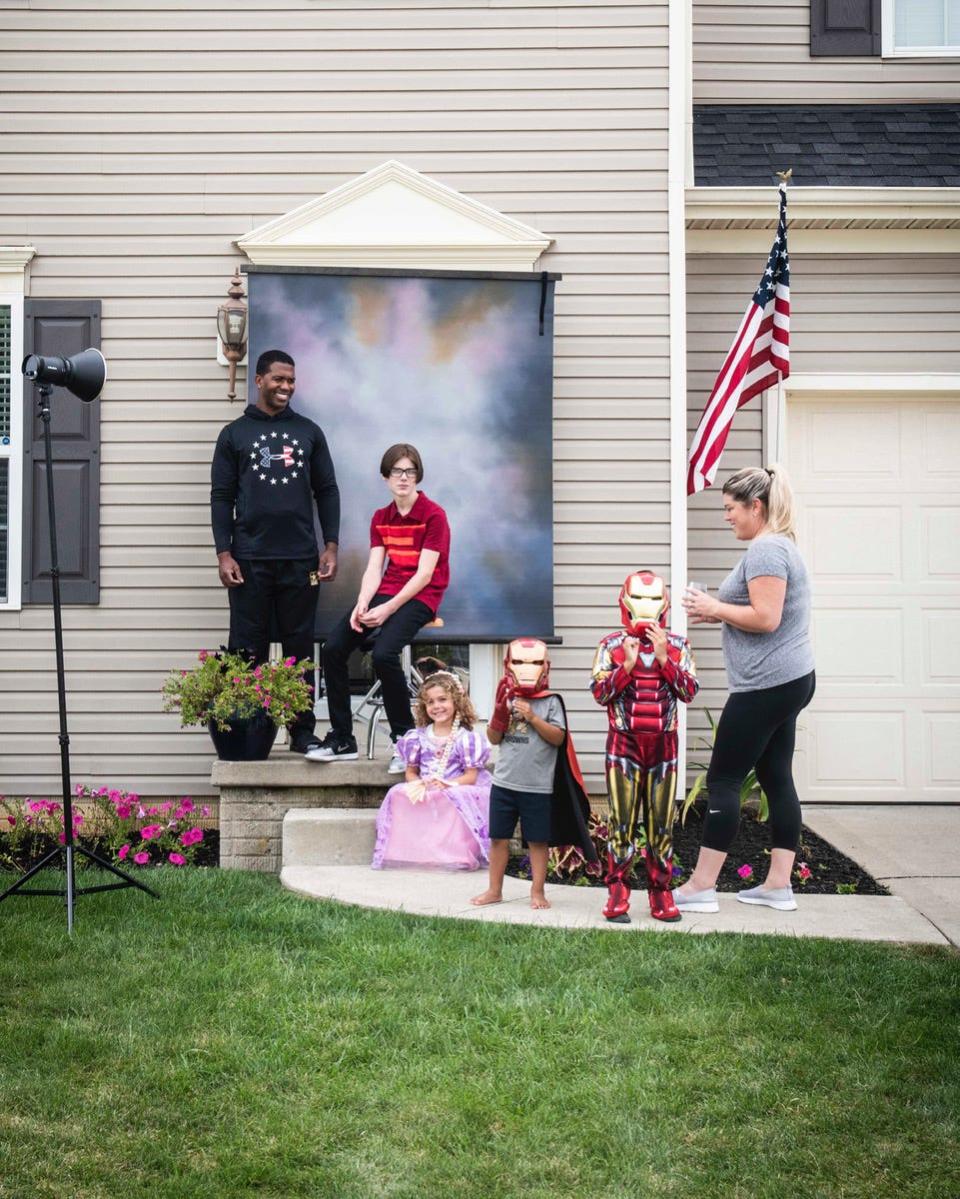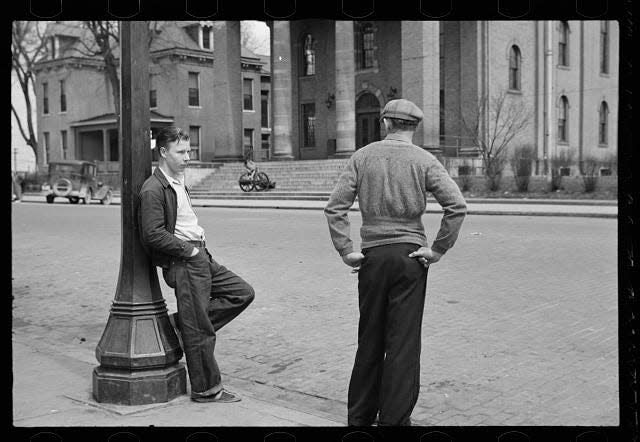Visual Arts: The Great Depression meets modern pandemic in 'Chronicles' photo exhibit

LANCASTER — The hardships and resilience experienced with striking similarity by Americans during two traumatic periods of history are on display in a photographic exhibit at the Decorative Arts Center of Ohio.
“Chronicles: The Great Depression and the Pandemic” continues through Aug. 28 in Lancaster’s historic Reese-Peters House, home of the Decorative Arts Center. The exhibit — curated by art historian Christine Fowler Shearer and Arnold Tunstall, director of University Galleries at Myers School of Art at the University of Akron — juxtaposes more than 80 images from the 1930s and ‘40s with contemporary scenes from the ongoing COVID-19 pandemic.
Sounds of faith: Traditions of different faiths cross boundaries and mingle in 'Religious Soundscapes'
The black-and-white Depression-era photographs are by renowned artists such as Dorothea Lange, Gordon Parks, Jack Delano and Ben Shahn and include a number of images shot in Ohio. The contemporary photographs are by five Ohio artists, shooting both in color and black and white to document the ongoing pandemic.

In the four upstairs galleries and hallways of the Decorative Arts Center, photographs from both eras are presented side by side, finding comparisons across the decades.
Most powerful are the supersized prints of two women presented next to each other. Dorothea Lange’s “Near Childress, Texas, June 1938” is a portrait of the wife of a migratory laborer, her hand on her forehead, standing before a bleak rural landscape. “Emily: RN Emergency Department, March 2020” is Autumn Bland’s portrait of a very pregnant nurse wearing a mask, hands on her hips as she pauses from her duties.
“These are strong mothers and heroic figures from both eras, dealing with what has been thrown at them — and shot by two women photographers,” said curator Tunstall.
A good portion of the Depression-era photographs are of Ohio scenes: Theodor Jung’s “Jackson, Ohio, April 1936,” focusing on two idle young men on a sidewalk; Carl Mydan’s “Cincinnati, Ohio, December 1935,” showing a row of identical, humble houses near the Ohio River Valley; and Ben Shahn’s “Lancaster, Ohio, August 1938,” the scene of a used car lot promising bargains from $29 to $189.
Impressive display: 'Immersive Monet & The Impressionists' exhibit opens Saturday in Columbus
Contemporary photographs show the vacant city streets and cloistered home life of COVID-19 lockdown as well as the sorrow and some of the beautiful ways people have taken care of one another. Akron photographer Shane Wynn’s “How Could This Happen?” finds the photographer’s daughter standing under an umbrella before a field of thousands of white flags representing COVID-19 deaths.
Autumn Bland would travel to the houses of high school students, offering to set up her equipment and take senior pictures on porches. Her photograph “The Pryor Family, Brimfield, August 2020” shows one such session, with the graduate’s siblings in Halloween costumes photo-bombing the scene.

Nearly all the contemporary photographs are accompanied by QR codes allowing visitors to hear more background about the scenes in the voices of the photographers.
At the entrance of the exhibit are two huge photographs of downtown Lancaster — one from 1938 and one from 2020. Two more large photographs show bread lines during the Depression and a 21st century line of cars whose passengers are waiting to be tested for COVID. In another interactive feature of the exhibit, a touch screen allows visitors to select a vintage photograph of a Lancaster street, then swipe across it to reveal how that same street looks in present day.
Tunstall said that he and Fowler Shearer, his co-curator, appreciated how the style of the Depression-era photographers, who were funded by the Works Progress Administration’s Farm Security Administration (FSA) program, bears similarities to the style of contemporary photographs, especially those selected by Tunstall for this exhibit.

“In some of these photos,” Tunstall said, “you can’t even tell what era they’re from. The farmer from today looks like the farmer from the 1930s.
Patterson patters on: 'I play for a living': James Patterson talks writing, celebrity collaborations and more
“Through the FSA, the government was using artists to spread imagery about the truth of what was happening to rural America — the Dustbowl, the poverty, farms without electricity … The contemporary photographers are chronicling the pandemic with money from their own pockets.
“But in both eras, the artists have had a desire to represent their community, their country. They have the artistic impulse to respond to their time and place and that’s something to be celebrated.”
At a glance
“Chronicles: The Great Depression and the Pandemic” continues through Aug. 28 at the Decorative Arts Center of Ohio, 145 E. Main St., Lancaster. Hours: 11 a.m. to 4 p.m. Wednesdays through Fridays, 1 to 4 p.m. Saturdays and Sundays. Admission is free. Call 740-681-1423. Special events are scheduled in conjunction with this exhibit. Visit www.decartsohio.org.
This article originally appeared on The Columbus Dispatch: 'Chronicles' photo exhibit compares Great Depression, COVID pandemic
